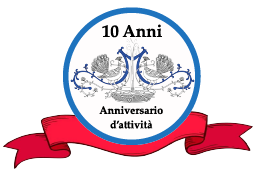All is pitch dark in the room. The lights come on, a few seconds of silence and then Anastasia, Jennefer with Cinderella’s cruel stepmother come on stage. All goes according to the script of the popular fairy-tale, with a particularity that makes the interpretation special: the actors are youngsters suffering from severe mental disorders. Theatre, art and communication used as a “cure” and to intergrate the ill-fortunate into society.
Gabriella Guidi Gambino follows them with her gaze, her eyes shiny , deeply satisfied with the work she has carried out with enormous devotion and sacrifice. She has been taking care of people in difficulty for twenty-seven years by now, placing creativity and imagination in the centre. “This all started in spring 1986, when my husband Agostino and a group of friends of his set up a work-shop, an association that brought acting- laboratories and journalism together with the community of CeIS led by don Mario Picchi, who was in charge of the rehabilitation of drug-addicts”.
The theatre is a highly learning experience for these youngsters, who through communication try to express their potential creative skills, “in this way we noticed that they managed to get a better understanding of themselves and become better people, it was like a medicine for them.” Then, Gabriella with the passing of time, began focusing all her energy on the youngsters suffering from serious mental disorders: “I spend my time writing in the morning, sorting out my thoughts, in line with the emotions that these youngsters pass onto me. I have just finished writing a book which narrates the adventurous experience of the Work-shop. In the afternoon, I am totally at their disposal. At a glance, you would never think that these people are suffering from some disorder. However autism, the mentally retarded, forms of total closure to the outside world make them very fragile, we have given them the possibiity of expressing their feelings.”
This is a slap to the prevailing culture of waste. By now, the work-shop has a real stable ‘core’, “some of them won’t leave us anymore, they’ve grown up with the association, they’ve been with us for 10 years. We are their family now.” Notwithstanding the difficulty and arduous work involved in taking care of youngsters with disorders, Gabriella smiles when speaking about her activity: “It’s like a social diary on friendship, suffering, solitude, which makes you live life intensely.”
And then goes on to explain how she came to be acquainted with this world, putting her life at the disposal of others: “I wanted to combine my love for restoration, writing, journalism, camera, theatre with the volunteer work I was doing at Villa Maraini, thus combining solidarity with problematic youngsters. And I’ve seen that there has been a change. Families are calling me to thank me and the association is becoming a point of reference to them. Once, someone referred to our laboratories as a school of life.” In fact, the association does represent especially to the families, a breath of fresh air from the daily routine problems.
What renders the work-shop particular and unique in experience, is that alongside every less-fortunate youth, there is a student from the European University of Rome, who can choose to attend the laboratories, principally to obtain training credentials, and then to operate in the sector of volunteer-work. “They all work together, doing the same identical things. Integrating is very important, the encounter between ‘abnormality’ and ‘normality’ does good to both and has a driving effect. I have seen autistic youth get enthusiastic at the sight of students – narrates Gabriella – for the youth, they understand it is an incentive to improve. On the part of students, they discover things about disability that they would never have immagined before, which could be something like a simple smile, a pun, building a mutual comunicative relationship”. There’s a lot of wealth in this exchange, so much so that the students often forget about their training credentials, and build real and true friendships.
Autism hence, is a particular issue, more often than not, little is said about it, there is a distorted vision about the disease. Gabriella is a direct witness on how a direct channel of emotions can be left to unfurl: “It is said that autistic youngsters, have great inner intelligence, sensitivity and skills in doings things. It’s exactly so: our youngsters write, draw, and act. We try to spur their talent in doing the activities.” That the theatre be a real cure-all for those affected by autism, has been revealed in a recent American pubblication on “Autism Research”, nevertheless, it would be sufficient to observe Gabriella’s life to understand which is the right path to take up.
Translation provided by Marina Stronati










